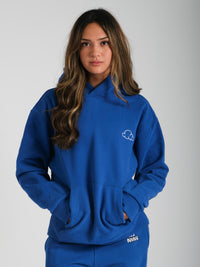Common Sensory Triggers in Clothing and How to Avoid Them
For children and individuals with sensory sensitivities, finding the right clothing can be a challenge. Tags, seams, fabrics, and other elements that most people overlook can cause significant discomfort for those with heightened sensory processing. Understanding these common sensory triggers and how to address them can make a world of difference in daily comfort and confidence.
Here’s a closer look at common sensory triggers in clothing and tips on how to avoid them.
1. Scratchy Tags and Seams
One of the most common sensory irritants in clothing is scratchy tags and seams. Tags, often placed at the neck or waistband, can feel rough or abrasive against sensitive skin. Similarly, thick or uneven seams can cause irritation.
How to Avoid This
-
Tagless Clothing: Look for tagless options that use printed labels instead of sewn-in tags.
-
Flat Seams: Opt for clothing designed with flat or minimal seams to reduce skin friction.
-
DIY Solutions: Carefully remove tags from existing clothes and sew down seams if needed.
2. Rough or Irritating Fabrics
Certain fabrics like wool or synthetic blends can feel rough, itchy, or too warm. These materials can overwhelm individuals who are sensitive to touch, leading to discomfort or even distress.
How to Avoid This
-
Soft, Natural Fabrics: Choose fabrics like organic cotton, bamboo, or modal, which are soft and breathable.
-
Pre-Washing Clothes: Wash new clothes before wearing to soften the fabric and remove any chemical residues.
-
Trial Runs: If possible, let the individual try on clothing to test its feel before purchasing.
3. Tight or Restrictive Fits
Clothing that is too tight or restrictive can feel suffocating to individuals with sensory sensitivities. Elastic bands, tight collars, or rigid waistbands are common offenders.
How to Avoid This
-
Relaxed Fits: Select clothing with looser fits that provide freedom of movement.
-
Adjustable Options: Look for pieces with adjustable waistbands or stretchy materials to ensure a comfortable fit.
-
Seamless Underwear: Invest in seamless underwear or bralettes for those particularly sensitive to tight elastics.
4. Overwhelming Textures
Textures like ribbing, embroidery, or embellishments can be overwhelming for someone with sensory processing challenges. Even the pattern of a knitted sweater can feel "too much."
How to Avoid This
-
Plain Designs: Stick to simple, texture-free designs that don’t overwhelm with multiple layers or patterns.
-
Turn Clothes Inside-Out: If internal textures like embroidery backing are bothersome, wearing the clothing inside-out can sometimes help.
5. Temperature Regulation Issues
For those with sensory sensitivities, being too hot or too cold can intensify discomfort. Clothing that doesn’t breathe well or traps moisture can exacerbate this issue.
How to Avoid This
-
Layering: Choose breathable base layers and lightweight, removable outer layers to allow for easy temperature adjustment.
-
Moisture-Wicking Fabrics: Opt for moisture-wicking materials to keep the skin dry and comfortable.
-
Seasonal Choices: Select season-appropriate clothing that provides adequate insulation or ventilation.
6. Bright Colors and Patterns
While some enjoy bold designs, bright colors or complex patterns can be visually overstimulating for those with sensory sensitivities.
How to Avoid This
-
Neutral Colors: Stick to muted tones and solid colors that feel calming and soothing.
-
Simple Patterns: If patterns are preferred, opt for subtle, minimalistic designs.
Why Sensory-Friendly Clothing Matters
For individuals with sensory sensitivities, the wrong clothing can lead to discomfort, distraction, or anxiety. Sensory-friendly clothing not only addresses these challenges but also promotes confidence and independence by providing a comfortable and functional wardrobe.
Finding Solutions with Cloud Nine Clothing
At Cloud Nine Clothing, we specialize in creating sensory-friendly clothing designed with comfort and functionality in mind. From tagless, seamless designs to innovative features like stress balls in cuffs, our collection is crafted to make life easier for individuals with sensory needs.
Explore our sensory-friendly clothing options and make dressing stress-free and enjoyable for everyone. Visit our website today to find your perfect fit!


